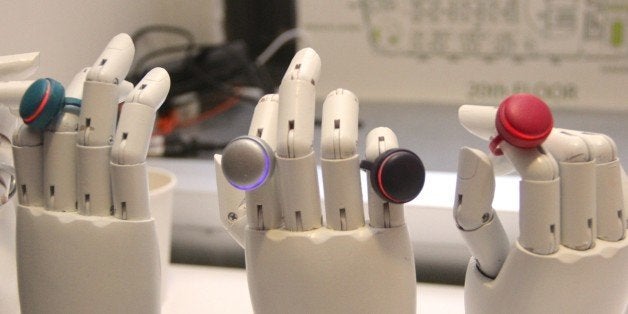
We live in a “what’s next?” era. Technology is evolving at an ever-more-rapid pace: Our devices become smarter, do more for us, and connect us to one another. We want the next big thing right now. But what kind of technology will get us to that next big thing, and all the cool things to follow? The key to building out the Internet of Everything (IoE) -- a world where devices, places and people become increasingly interconnected -- is to focus on making a permanent change for the better in our daily lives.
Cities and municipalities, when aligned to the IoE, will be more efficient and consume less power and water. You may be able to pay for your bus or cab ride simply by entering the vehicle with a smartphone in your pocket or smartwatch on your wrist. And that same smartwatch may someday use sensors on your body or in clothing to diagnose -- or even treat -- maladies remotely.
For all this to happen, the technology of the IoE must both scale up to meet the huge range of possibilities and scale down to meet the size and power requirements of the diverse range of devices and things that will comprise the truly interconnected world. Connecting virtually everything requires a broad mix of wireless technologies -- 4G LTE, 3G, Wi-Fi, Bluetooth, and more -- that meets the needs of all those devices and things coming online, and empowers new ways of using them.
If all these connected devices and things are going to become truly useful to us, though, they’re going to need greater intelligence and more processing capabilities. Take a connected car, for example: The auto industry is already taking advantage of multiple connectivity technologies and processing capabilities to provide us with convenience, infotainment and safety features. Telematics for cars currently encompasses GPS systems, remote vehicle diagnostics and automatic crash notifications.
Going forward, connected cars will do even more. They’ll soon be able to support streaming maps with traffic updates and street-view images, live information such as local weather or news, streaming multimedia like video and firmware updates that are automatically delivered to your car without a visit to the dealership. Through the combination of Wi-Fi, DSRC (direct short-range communication) and LTE, the stage is being set for the next generation of connected cars.
The IoE keeps us seamlessly connected at home, as well. Current homes have up to nine or so connected devices -- and soon it will be more than 20. How will these devices integrate into our home experience to simplify our lives? Wi-Fi, Powerline and Ethernet will be able to handle our enormous and ever-growing home networking needs, and Wi-Fi software features like MU-MIMO (for simultaneous transmissions on Wi-Fi) help ensure that the network is at its best.
The smart home, however, goes far beyond the technologies of the network. All these devices will need highly optimized and integrated intelligent connectivity. The home’s thermostats, water heaters, appliances, security systems, lighting and audio systems all will be connected through this dynamic network and will need to communicate simultaneously and securely with each other; this is not a data center or closed garden model. Future homes will be run with maximum efficiency, saving you money and lessening your impact on the environment. They’ll leverage interoperability protocols like AllJoyn -- an open-source communications framework from the Allseen Alliance -- that allow for real-time content sharing and interaction between applications, devices and people, and that also help facilitate a common language for connected things.
Not only is the IoE about creating seamless connections for individuals, it’s also about making sure we all live together better. By 2050, 70 percent of the world’s population will live in cities, creating huge challenges to modernizing infrastructure and services. But imagine that your nearest urban center is no longer a tangle of physical pipes, wires and roads, but a city full of sustainable connectivity solutions.
For example, perhaps you’re running late for a meeting. Your phone could intuitively notify you of a nearby vehicle from an autonomous ride-sharing service. Or imagine never having to worry about finding a mobile hotspot. Initiatives such as LinkNYC provide free city-wide Wi-Fi connectivity at gigabit speeds -- and free phone calls from any Link kiosk in the city.
Qualcomm Technologies, Inc. is aiming to create a converged connectivity platform -- the connectivity fabric of everything. We’ve already transformed computing and the Internet by making them mobile. And now, the Internet of Everything is quickly becoming reality.
Qualcomm is committed to connecting the world to make it smarter sooner. We have been accelerating connectivity for 30 years. We have the ingredients to lead the world through the next advances. While others wonder “How?” we ask, “How soon?” And as the world asks, “What’s next?” we say, “Why wait.”